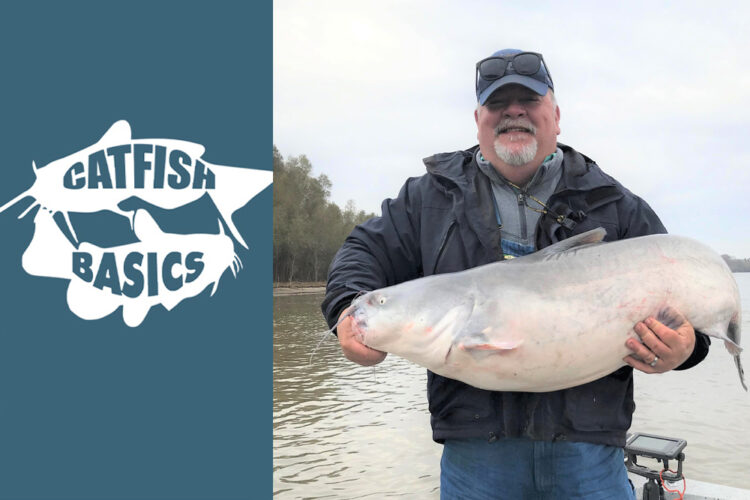All dikes are different. Period! I like to find the longer dikes that 1) are close to the main channel and 2) have multiple eddies and down currents. When I first approach a dike I look first for the current seams and scan them. If I see fish, I will Spot-lock the boat and fish the seam.
If I have no luck I will find the next seam and repeat the process. Most of the bigger dikes also have a “blow out” hole that is usually right next to where the dike meets the bank. Over the years the circling currents have washed out a substantially deep hole. If you ever scout with google earth on your computers the blowout holes will stick out like a fly in the soup!
When the dike is partially visible, holes in the dike itself sometimes create deep channels behind the dike. Try to position your boat right next to the faster water and throw into the current. We have also found success dragging behind the dikes when the currents are too strong.
As far as rigging goes we usually try a few different rigs. Three-way rigs work well. We like to put the 6 ball chain swivel halfway up our hook leader. We use 50-pound mono anywhere from 3-5 feet long with a 6- to 8-inch weight leader. A 5- to 6-oz bank sinker is the norm for this rig.
We also like to rig up a few Carolina rigs with an 8-oz teardrop weight and a 3-foot leader. I will usually keep a Colorado spinner blade on one of the Carolina rigs. I string 2 beads, a blade, and 2 beads again before I tie the hook on. The blade will spin around atop the bait when current is present. It can be quite productive.
We mainly use cut skipjack chunks for bait but always have one rigged with a head. The main thing is to spend a little time on the dike, hit it from different angles, and be persistent! That big boy is swimming around that dike somewhere. It’s up to you to find him. This method works year-round, but the cooler months are better.
Note: Steve Hearn recently received the BadBoy Moirs/CaMMo Small Engines Angler Of the Year award at the TriState Tournament Directors 2021 Classic on the Mississippi River out of Helena, Arkansas. His knowledge of fishing dikes helped propel him to the prestigious AOY title.



